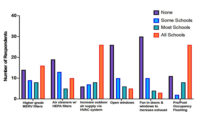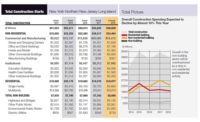According to a new study by McGraw-Hill Construction, publisher of ENR Mountain States, both K-12 and universities plan to continue investments in green schools, citing financial and social benefits.
The “New & Retrofit Green Schools” study shows social benefits such as improved health and productivity, are critical drivers for the education sector and equally as important as financial drivers.
“Over 75% of respondents consider improving indoor air quality and enhancing health and well-being as key drivers, which is nearly the same percentage that cite financial benefits, such as lower operating costs and reduced energy use,” said Harvey Bernstein, vice president, Industry Insights and Alliances for McGraw-Hill Construction.
“In the K-12 sector, social factors are particularly prominent, with over 75% of respondents also citing increased student performance as an important element of their decision to build green. Aside from the real benefits to our young people in their development, this is also particularly important at driving future green building growth, as our next generation of construction industry professionals learn practices that will become embedded into the design and construction of all buildings in the future.”
Additional social benefits of green building cited by respondents include:
• Improved test scores, reported by 70% of K-12 respondents;
• Increased enrollment, reported by 39% of higher education respondents;
• Increased reputation, reported by 65% of higher education;
• Positive impact on student health and well-being, reported by all K-12 respondents and 90% of higher education respondents
The study also shows that cost savings are critically important to the education sector, as they are to all other sectors. Over 75% of respondents in both K-12 and higher education report that reducing energy use, operational savings, and improving 10-year operating costs are important reasons that have led them to build green.
Financially, 58% of administrators, facility managers and school design, and construction and real estate staffs at K-12 schools report decreased energy use in their green buildings, and 55% cite lower annual costs. For higher education, the financial benefits equate to 55% of respondents reporting decreased energy use and 46% reporting lower annual costs.



Post a comment to this article
Report Abusive Comment